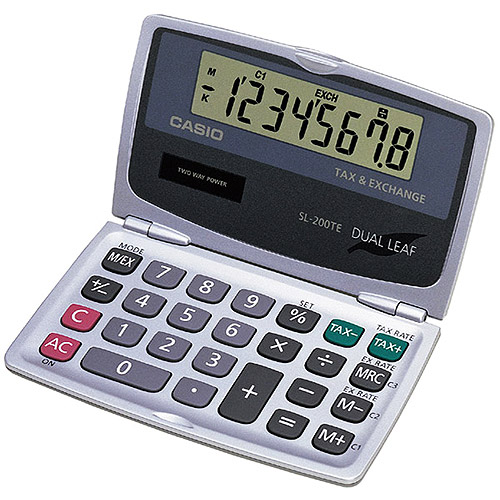Negotiate a price first. Not a price and a financing percentage. Not a price and a cash back amount, available only to friends of the dealership, like you. A price. A fixed, solitary number of dollars that the dealer is willing to accept in exchange for its vehicle. That’s all you need, and all you want, before negotiating. Why? Because you can’t negotiate multiple quantities at once. It’s too complicated.
You can have the car for $20,000 cash. Or we’ll discount it 10%, with 4.9% financing for 5 years. Does that sound fair?
It doesn’t take a mathemagician to know that subtracting 10% from the price of a car and adding finance fees of 4.9% means a net savings of 5.1%, right? In fact, while the dealer would probably never go for it, you might even want to ask for a 20% discount with 9.9% financing.
Let’s look at the three scenarios:
a) $20,000 cash. Cost to you, $20,000.
b) $18,000, with 4.9% financing. Cost to you, $20,331.
c) $16,000, with 9.9% financing. Cost to you, $20,350.
Price first, terms later. Welcome to another illustration of compounding interest and how it can screw the unprepared. Always start any negotiation with a raw dollar figure and no financing terms. If you don’t, it’s too easy to just accept an interest rate on faith without bothering to do the math. Besides, interest rate numbers often seem so innocuously small that you’d think they couldn’t possibly damage your checking account balance that much. But they can.
Want to know how much a particular nominal price coupled with a certain interest rate will cost you? Well, you could guess. And you’d probably be as wrong as you were when you guessed that a 20% discount with a 9.9% interest rate was a good deal. Write this formula down. You haven’t even seen it yet, so stop bitching about how complicated it looks.
abc (1+(c/12))b
______________________
12 ((1+(c/12))b-1)
Where
a = nominal price
b = number of monthly payments
c = interest rate
Waah, it’s got parentheses and double parentheses and triple parentheses and those little numbers that go up top.
First, they’re called exponents. Second, this is not hard. Let’s demonstrate:
Say the dealer offers you yet another scenario: $18,500 (thanks to $1500 bonus cash, direct from Dearborn!) with a 4% interest rate. Plug the numbers in.
18,500 x 60 is 1,110,000.
4% of that is 44,400. That’s your term, from the numerator. That monstrosity to the right of it isn’t much harder.
4%/12 is .0033333.
Add 1.
Take that to the 60th power, that’s 1.22099659.
Save that term, you’ll need it later.
44,400 x 1.22099659 is 54,212.25.
That term you saved? It appears in the denominator (with 1 subtracted from it) giving you .22099659. Which, when multiplied by 12, gives 2.651959.
Divide that into 54,212.25, and you get $20,442. Among all our examples, that’s the worst deal yet.
The car salesman hasn’t put this much thought into it, of course. He simply gets a list of approved price/interest rate combinations from corporate and tries to sell you on the worst possible ones. But if you insist on having him quote you a cash price, and don’t even listen to the financing options, he’s forced to negotiate on that and that alone.
Once you’ve got your cash price (in this example, $20,000) you’re in the figurative driver’s seat. Most car buyers don’t even think about this, but,
If you want to borrow money, you don’t have to borrow it from the dealer. Even though you’re physically in his building, that doesn’t make him the only lender in existence.
Call your bank. Talk to the friendly teller- the one you flirt with every time you go in and would ask out if it wasn’t for the unflattering androgynous khaki uniform pants- and ask for a loan officer. Tell the loan officer that you want to know what rate they’ll let you borrow $20,000 at. If you’re really smart, you’ll have done this before you started car shopping. (So pretend this paragraph appeared at the top of this post.)
At the very least, talking to your bank gives you options. If your bank offers to lend you $20,000 at 3% and the dealer is offering 3.5%, tell the dealer to beat the bank’s price. The dealer will be infuriated by this, because
a) you didn’t accept his financing offer blindly;
b) you’re asking him to come down a little, which he could interpret as a blow to his pride;
c) you went behind his back and dealt with another party. The nerve.
The dealership floor is not the place for decorum and etiquette. You’re there to spend as little money as possible, so you can buy assets with what you have left. You’re not there to make friends, especially not with a salesman who doesn’t care if you live or die once you’ve signed the paperwork. Stand your ground. Even if the dealer brings his sales manager in to play good cop/bad cop and berate you for insulting and making a mockery of the car-buying process, you can just sit back and smile. Remember from last week: there are 17,999,999 other cars out there. If you feel slighted, you can get up and leave.
(That is, if you didn’t hand your keys to the valet or your driver’s license to the salesman when you entered the dealership. Oh, you didn’t, did you? Good Lord, do we have to do everything for you? Next time, park on the street and bring a photocopy of your license.)




